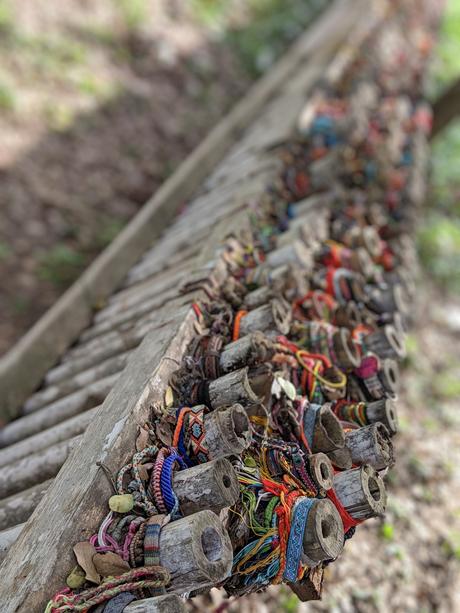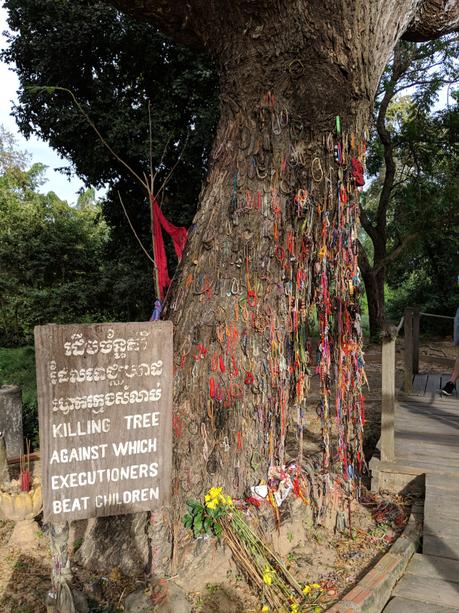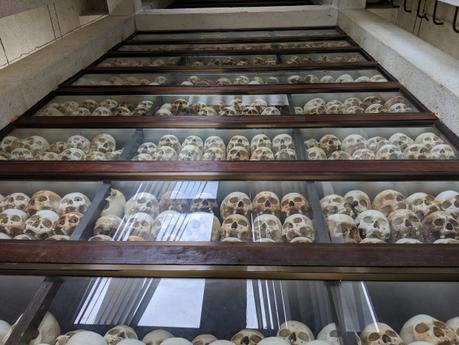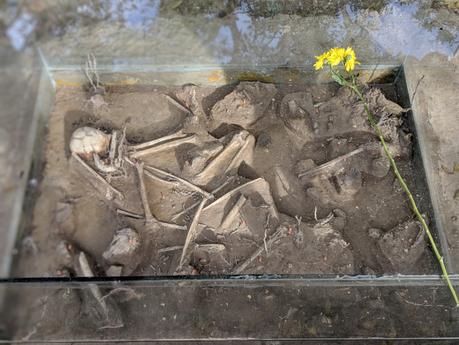Disclaimer: Contains graphic depictions of death and brutality, unfortunatley, all of which is based on truth. There are pictures and accounts of the genocide perpetrated on the Cambodian people by the despotic rule of the Khmer Rouge, under the administration of the Angkar, with Pol Pot’s at the helm
As a doctor, I have seen and touched death. Never has it affected me the way it did when I visited the “killing fields” of Choeung Ek, just outside Phnom Penh, Cambodia. In the memory of the tens of thousands of people who were beaten, shot, bludgeoned, beheaded or otherwise disposed of, stands this silent monument. The sheer scale of human brutality that we experienced, as we walked through the well-worn wooden plank ways, was somewhat nauseating. The fact that man could do this to his fellow human beings, was so unimaginable. In the midst of this serene reminder of a violent past, not so far back in the day, stands the monument housing the skulls of the excavated bodies. The significance of the place rings through the silence which reigns despite the presence of throngs of visitors – each one in a shocked silence, awed, dismayed.

Between 1975 and 1979, the brutal Khmer Rouge regime, carried out a genocide on the Cambodian people, driven by a misplaced theory of social engineering inspired by communist ideals. Of the 8 million or so Cambodians, in those short, four years, as many as a quarter were exterminated. In the heydays of the Choeung Ek Killing Fields, as many as 300 people would be killed off in a single night.
I stood, transfixed by horror, as I gazed upon the majestic tree, whose bark was carpeted with small red twine, in memory of the ones who had been killed near it. A laconic, rickety wooden signboard proclaims, in a very matter-of-fact manner, the fact that little babies were beaten to death against this tree. Death is a costly business, and a premium was put on modes of killing people which would not raise the sound or the bills, as a gun shot would do. Little babies, children, toddlers – caught by their legs and swung headfirst into the bark of the tree. The horrifying story of the discovery of a mass grave with the mangled bodies of the children who were discovered close to the tree was unnerving. Immediately after the Khmer Rouge had been overthrown by the combined forces of the Vietnamese army and disillusioned Cambodians, people were trying to find out sources of food and sustenance. One such forager chanced upon the killing field at Choeung Ek, in his pursuit of digging for edible roots and tubers. This unfortunate man stumbled on to this killing tree, whose bark was smeared with what looked like brain matter, bits of skin, hair – and before he realized what he was witnessing, he ended up discovering what must have been the worst nightmare he never imagined – scores upon scores of naked bodies of women and children, in various stages of decomposition, bearing the marks of a brutally administered death.

There were 129 mass graves, most of them containing hundreds of bodies, and the tally of the excavated bodies almost reached 10,000. However, the guide noted that there were only 86 graves which could be safely excavated. Landfalls and waterbodies had claimed some of the graves, and the excavation team let them lie in peace. A disconcerting melange of reverence with a sense of nihilistic fatalism oozed from every aspect of this place. Even now, in years when the rains are heavy and the soil shifts around, bones, teeth, clothes are regurgitated by the earth, which holds in its bosom the evidence of savagery that man perpetrated in the name of social engineering.

The peaceful ambience is such a macabre facade. Today, the entire place stands in silent contemplation of the bloodied past, the taciturn environment almost lulling one into a sense of comfort, only to be jarred back to the reality by a signboard, stuck askew, marking out the ghastly breaches of human rights in the most businesslike, pragmatic, unsentimental tone. One such natural cenotaph is the so-called “Magic Tree”, from which the Khmer Rouge soldiers used to hang a generator-powered microphone, blaring propaganda and party songs, in a bid to drown out the screams of the dying. Just imagine, the immense sensory deprivation that the condemned Cambodians must have felt in their last moments; dragged away by rough hands, blindfolded, amidst the cacophany of a diesel generator, its fetid fumes and perpetual clacking drowned by the louder wails of the propaganda music – the only form of music allowed by the state – begging for your life, if you even had the strength – only to be killed in the most savage, primeval manner possible.

Gazing upon the vast wastelands of Cambodian lives, I felt my problems recede into the background, into nothingness. And I felt a deep sense of helpless disquietude; a sense of failing; a sense of foreboding.
As I walked away from Choeung Ek, and the doors to the shrine of death closed behind me, I was in a confusing tizzy of emotions: shame, at my voyeuristic prying into the last burial grounds of a myriad men, women and children murdered brutally by their own countrymen; agitation and unease, at the amount of privilege I took for granted; chagrin, at the dexterity with which I sought out more and more material comforts; and a deep sense of gratitude, for all that I had in life…
